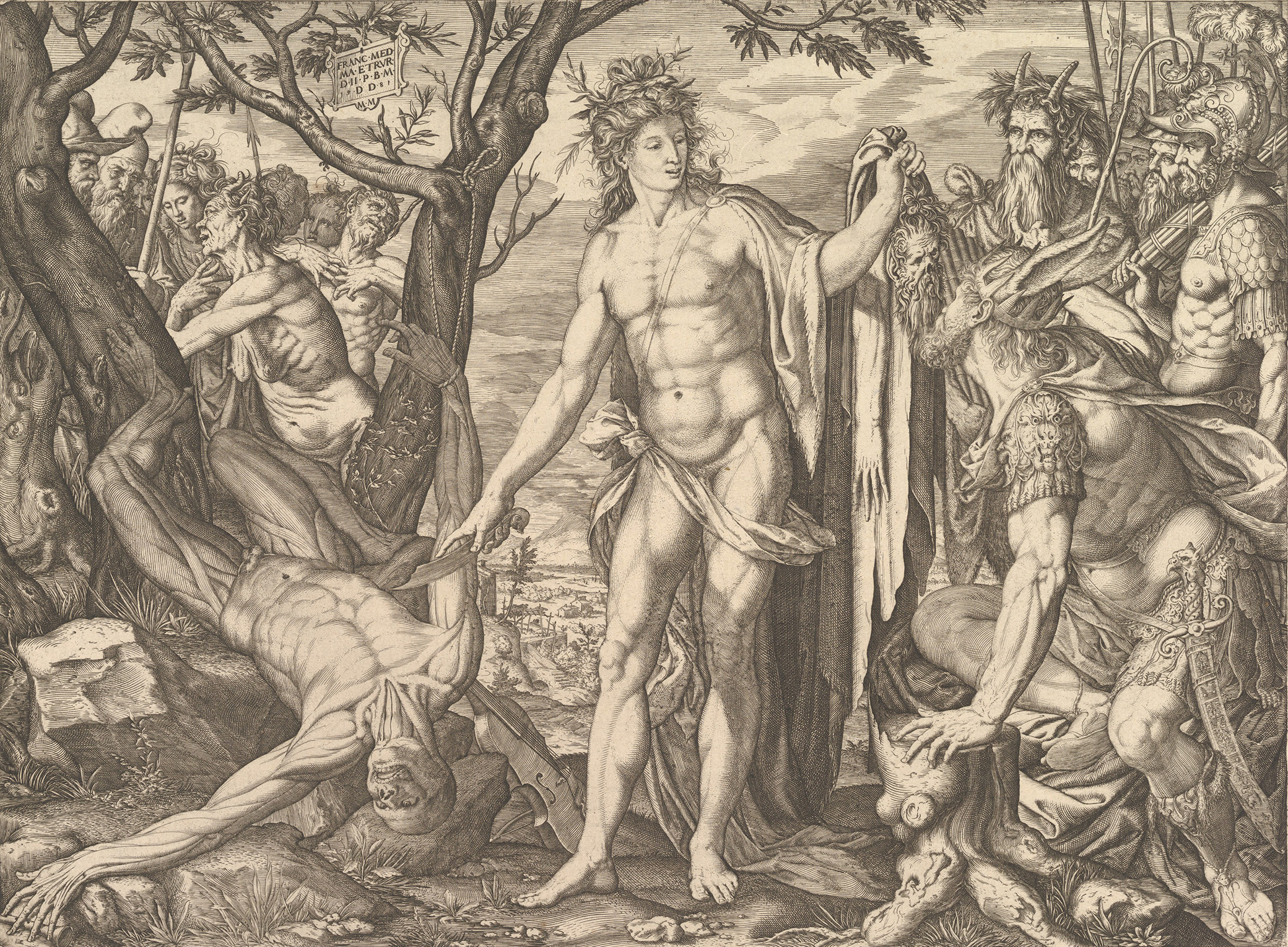
Apollo and Marsyas and the Judgment of Midas, by Melchior Meier, 1581. The Metropolitan Museum of Art, Bequest of Phyllis Massar, 2011.
Throughout the sixteenth and well into the seventeenth century, the Ottoman Turks and the Safavid Persians fought a series of wars for control of the southern Caucasus and parts of the Mesopotamia. The rivalry between the empires—the two most powerful forces in the Middle East at the time—was not just territorial, it was also religious: the Ottomans were Sunnis, the Safavid were Shia. In his 1587 work titled The War Between the Turks and the Persians, physician and historian Giovanni Tommaso Minadoi illustrates the visceral hatred between these denominations with the following account.
In 1585, after a battle won by the Turks, Ibrahim Pasha ordered that the imprisoned commander of the Persian army be “stripped and flayed quick.” While the executioners proceeded to undress him, he cursed their religion and demanded that they first cut off his penis, penetrate Ibrahim’s wife’s “nature” with it, and then insert it into Ibrahim’s mouth, “for so he will be contented and satisfied with my flesh.” After the Persian commander’s clothes were removed, Minadoi continues, “three great slashes were made on his back where they began to flay him; and then the barbarous soldiers…made certain other gashes upon his breast and upon his stomach, and so drawing his skin downward they could not bring it to his navel, before he was dead with most dolorous pains.”
Graphic though this account may be, it didn’t seem to fully satisfy the imagination of one of its most illustrious seventeenth-century readers, the Norwich physician Sir Thomas Browne. In Musæum Clausum, the extravagant catalogue of a nonexistent museum-cum-library (Browne’s only work of fiction), one of the greatest prose writers of the English language imagines, among a number of other chimeric objects, a set of illustrations depicting “the exact method of flaying men alive, beginning between the shoulders according to the description of Thomas Minadoi in his Persian War.” Although that description wasn’t ut pictura enough for Browne, it remained ingrained in his mind. He treated the subject at length in an August 7, 1676, letter to his son Edward, who was also a doctor: “To excoriate men alive is still a practice in Turkey and Persia, where they begin first to take off the skin at the back, as Thomas Minadoi described in his relation of the Persian Wars.” This fascination with flaying, far from betraying mere scientific interest or even morbid curiosity, bespeaks a peculiar and novel way of thinking about the human body and, in particular, about the previously unsuspected complexity of its envelope, the skin—a continent so visible and yet so unexplored.

There is something about the excoriation of a living person that has haunted and continues to haunt our sensibility like perhaps no other form of aggression. It is the pain we assume it entails, of course. It is the horror of its imagined duration. It also may be picturing the victim conscious throughout the ordeal. But it is more than any of those factors. It is the sense that the skin is the one border that cannot and must not be crossed, the one garment that cannot be removed. The skin, that final frontier between the internal body and the outside world, at once connects us to the exterior and protects us from it. More than mutilation, more than any other form of physical violence and humiliation, the skin’s removal from a living person is the ultimate violation of a sacred space where our identity, our biological integrity, and our very personhood is shaped. In the early modern period physicians began to dissect and flay human bodies for the first time since antiquity, abandoning deeply rooted notions of the corpse as a hallowed entity. The way we think about skin—its importance and the horror of its removal—stems to a large extent from the innovative work of the pioneers of modern anatomy.
Browne wrote that letter to his son toward the end of his life, and it deals exclusively with the issue of skin. Skin was one of Browne’s greatest passions. As a student at Oxford, he writes, he once saw the tanned skin of a man hanging from a window in the school of medicine on the north side of the Bodleian quadrangle. At Oxford’s Anatomy Museum, which preceded the Ashmolean, he could have seen displays like Exhibit 180, “Skin of a woman not stuffed,” or Exhibit 50, “Scalp of an American who was flayed alive.” After graduating in the late 1620s, Browne spent three years on the Continent, where he observed bizarre skin conditions among children in the south of France and saw mummified bodies with skin that was dry as parchment, preserving the physiognomy of the deceased. He then studied at Padua, the mecca of anatomy, where he received training in the fine art of dissection, and wrote his dissertation at the University of Leiden. Because his dissertation is lost, its topic was unknown until 2007, when Browne’s biographer Reid Barbour found that it was the deadliest skin-ravishing disease of the time: smallpox.
In his 1676 letter, Browne explains the composition of the skin. Anatomists had long known from flaying cadavers that skin consists of two main parts: cuticula and cutis. The cuticula, or epidermis, is the most superficial layer of the skin and, Browne writes, “a kind of efflorescence of the skin made like the thin skin film or web upon milk and broth.” The cutis, on the other hand, is the “true skin,” the common tegument of the body. He stresses that the complexity of the different layers of the skin is a crucial matter for physicians, one that needs to be experienced firsthand at the dissection table. The physician must learn not only how to cut but also how to peel, indeed how to flay—the final step in the dissection. Browne suggests some tricks to separate cuticula and cutis in a cadaver, as he had done himself on many occasions. He recommends using boiling water and aqua fortis, an extremely corrosive solution of nitric acid in water. He also suggests cantharides, a blister-inducing substance, although he admits he has tried it without success. One must be aware that some parts of the body are much more difficult to flay than others, he warns, such as the palms of the hands, the soles of the feet, the forehead, the face, the ears and lips. These happen to be the most sensitive parts of the body, he adds. The art of removing the skin is proportionately subtle and delicate. Browne notes that the Ancient Greek word δέρμα (derma)—a generic term that refers to both human and animal skin (or, rather, hide)—comes from the verb δέρω (dero), which means to excoriate, to flay. As an envelope, the skin is essentially removable.
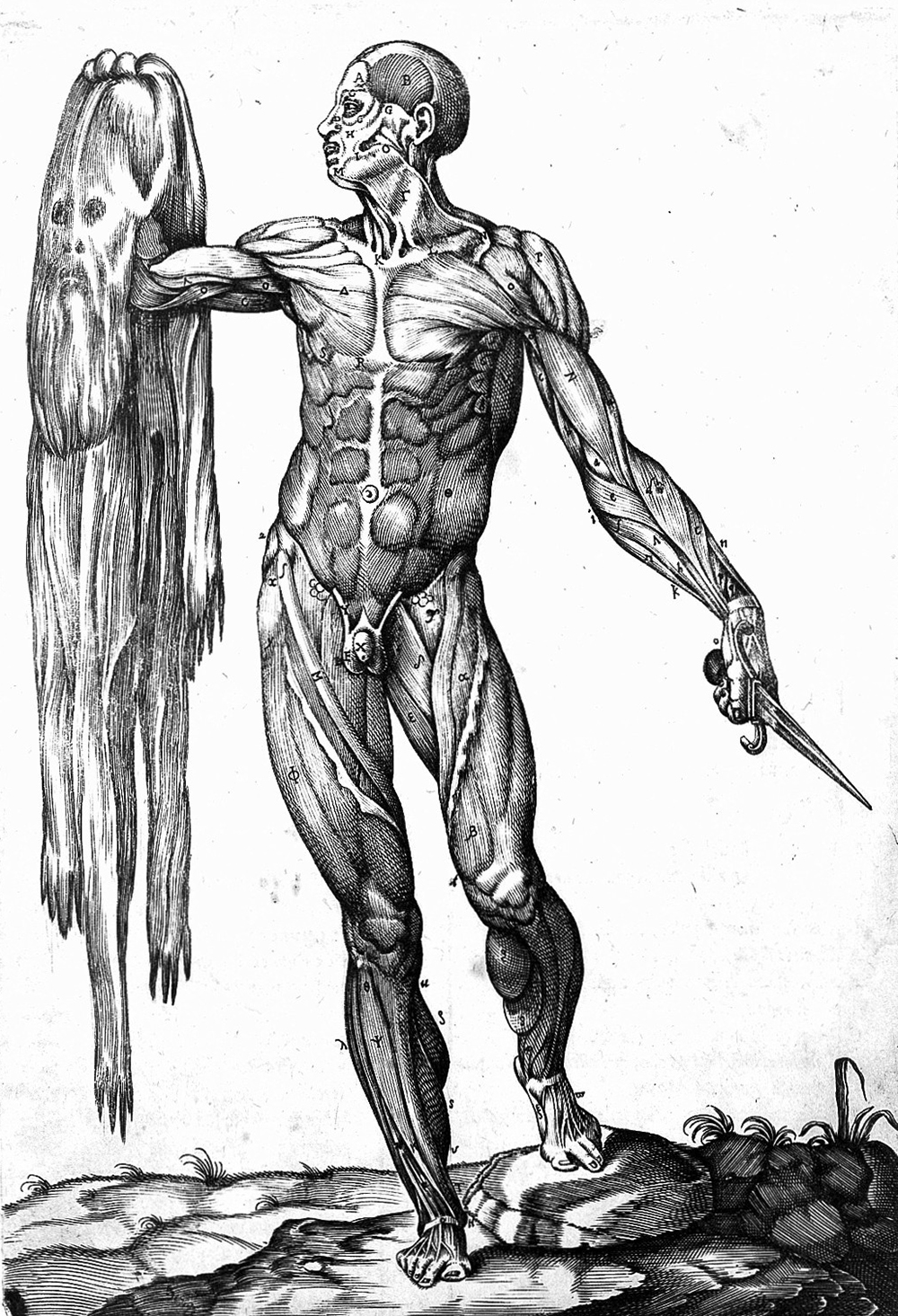
The other commonly used Ancient Greek word for skin is χρώς (chros), which can mean skin or flesh and also can denote skin pigmentation. In a Hippocratic text that deals with the nature of bones, we find the idea that flesh and skin give the body a complete aesthetic structure by providing a framework for it. In the same text, Hippocrates also discusses leprosy, scabies, pruritus, and alopecia, but he considers them “disfigurements” rather than diseases. A later pseudo-Galenic text, Definitions, includes one of the very first definitions of skin: nervous tissue that protects the surface of the body and provides it with aesthetic integrity and a sense of totality. In the Galenic teleological worldview, perforations and openings in the skin evince intelligent design underlying the structure of the human body since such perforations allow for the evacuation of excrement necessary for a healthy balance in the body. Renaissance anatomists went on to accept and adopt this view. But the skin, perceived as the physical border between an individual’s insides and the outside world, possesses a liminal quality that eventually transcends biology. In the minds of many early modern intellectuals, a study of its complex physiology involved metaphysical implications that eventually led to a new set of revelations concerning the relationship between body and soul, matter and spirit, and even between the human and the divine. Such insights slowly but surely pushed the old notion of derma as merely a decorative envelope into obsolescence. One of the first turning points in the gradual recognition of the organic relevance of skin is the key realization that the envelope of the body is also the organ of touch, something that had escaped both Aristotle and Galen. Although this idea had been around since the Middle Ages (in Conciliator, for example, Pietro d’Abano, who taught medicine at the University of Padua in the late thirteenth and early fourteenth centuries, cites Avicenna as his main source when arguing that touch is a faculty diffused throughout the skin), it was only in the Renaissance that it became widely accepted as anatomists peeled off layer after layer of the skin and corroborated it firsthand. Alessandro Benedetti’s influential Historia corporis humani sive Anatomice, published in 1502, deals with the matter in considerable depth, and later in the sixteenth century both Philipp Melanchthon, in his commentary on Aristotle’s On the Soul, and Hieronymus Fabricius ab Acquapendente, who also taught at Padua, expand on it and further its larger acceptance among the medical and scientific community.
Early on Andreas Vesalius, the most important anatomist of the sixteenth century and the great early champion of dissection, had noticed that skin is the most complex organ of the body by nature of its composition, “since it is something between the warm flesh and the cold sinews.” The complicated nature of the skin is a consequence of its essential and constitutive liminality. As Vesalius and other anatomists flay away, ever more meticulously, and find that layers have layers of their own—much like a child opening a matryoshka doll—for a moment they stop thinking of what treasure lies hidden deep inside and just look forward to unveiling the next layer. Physicians such as Jean Fernel, Matteo Realdo Colombo, Giulio Casserio, and others echo this growing interest in the human tegument. Skin no longer simply a cover, changing the way the body as a whole is conceived. In the first systematic treatise on diseases of the skin, De morbis cutaneis (1572), Girolamo Mercuriale emphasizes the way in which skin, rather than simply enveloping the inner body, is itself susceptible to pathology because it is connected to the inner body by veins, nerves, and tissue. Far from being a mere covering, skin is organic, a large, multilayered sensory organ in itself. At the same time it is also a vital part of a larger organism, the body.
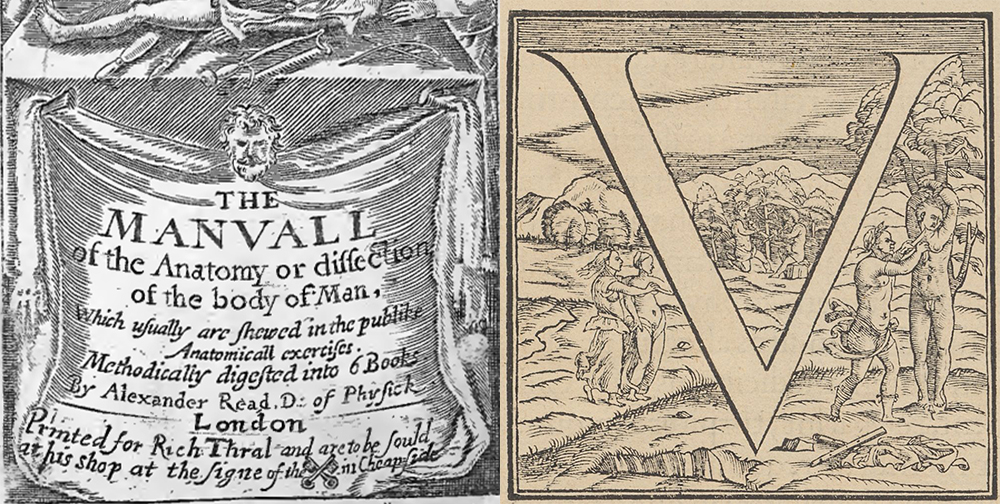
As interest in skin increased, anatomy manuals featuring illustrations of skinless bodies became ever more common. A famous example is Juan Valverde de Amusco’s Historia de la composición del cuerpo humano, which includes an engraving of a man who has flayed himself and holds up his own skin like a trophy. There are many others, beginning with a historiated initial in Vesalius’ Fabric of the Human Body showing a pastoral scene featuring the famous satyr Marsyas, who was tied to a tree to be flayed by Apollo, the god about to use the knife on his neck. The frontispiece of Alexander Read’s The Manuall of the Anatomy or Dissection of the Body of Man (1638) portrays the unfurled skin of a cadaver as drapery behind the title and author of the book. The same conceit appears in Nathaniel Highmore’s Corporis humani disquisitio anatomica (1651), as well as in Thomas Bartholin’s Anatomia Reformata (1651). This fascination with flayed skin, baroque though it may seem, can be understood from at least three different angles.
First, such frontispieces literalize the old Hippocratic-Galenic notion that the skin is the border between the inside and the outside of the body. The flayed skin, last spoil of dissection, becomes a lavish curtain that welcomes the reader into the world of a book where the mysteries of the human body will be revealed. Second, the scourge of deadly skin-disfiguring diseases such as smallpox and syphilis was causing extreme public alarm at the same time as revolutionary new theories of contagion held that the skin—the porous and permeable organ of touch—was the gateway into the body. Flayed skin then became a symbol for the importance of a long-neglected bodily organ, one that turns out to play a vital role in the cycle of health-contagion-disease and its resolution, whether death or healing and scarring. Finally, each person’s skin, with its unique marks and scars, spots and patches, is a defining mark of human identity. When the body is stripped of its skin so that the inner organs can be seen and analyzed, it loses that identity and its humanity. In the words of anthropologist and paleobiologist Nina Jablonski, “A person without skin is just a body.” The skin of a dissected cadaver reminds the reader, the student, and the anatomist that they are dealing with individual human beings.
This interest in flaying and skin transcended the realm of medicine. As Renaissance painters rediscovered the nude body and produced ever more vivid and realistic depictions of the skin, flaying scenes from classical mythology and from the life of Christian saints became the subject of a great number of visual renditions. Images of nude bodies with dove-white skin highlighted with pinkish hues, and muscular chests and arms in revealing chiaroscuro, are the counterpart of half-skinless bodies in full martyrdom. Often the same artists produced both. In many cases, the punishment looks remarkably similar to the scene of an anatomy lesson. By far the most common flaying scenes are of Saint Bartholomew and of Marsyas, whose story Ovid tells in book six of the Metamorphoses. There are dozens of versions of the flaying of Marsyas—woodcuts, engravings, illustrations, reliefs, a famous set of Paduan bronzes, two series of drawings by Parmigianino and Luca Cambiaso, a dazzling ivory statuette by Adam Lenckhardt, and even musical instruments (most notably, a harpsichord lid allegedly painted by Bronzino). Some present the mythological scene as an anatomical spectacle. An engraving by Melchior Meier depicts with disquieting naturalism the muscles and tendons of a completely excoriated Marsyas, and the lid of the harpsichord shows Apollo coldly pointing the knife at the satyr, who is lying against a rock with the skin hanging off his flayed legs like the peel of a fruit. Lenckhardt’s ivory, made for Prince Karl Eusebius of Liechtenstein in 1644, captures the scene midway through the excoriation, as half of the satyr’s skin falls from his torso like a thick tunic revealing flesh and muscles. But the most famous rendition of the flaying of Marsyas is, without a doubt, Titian’s.
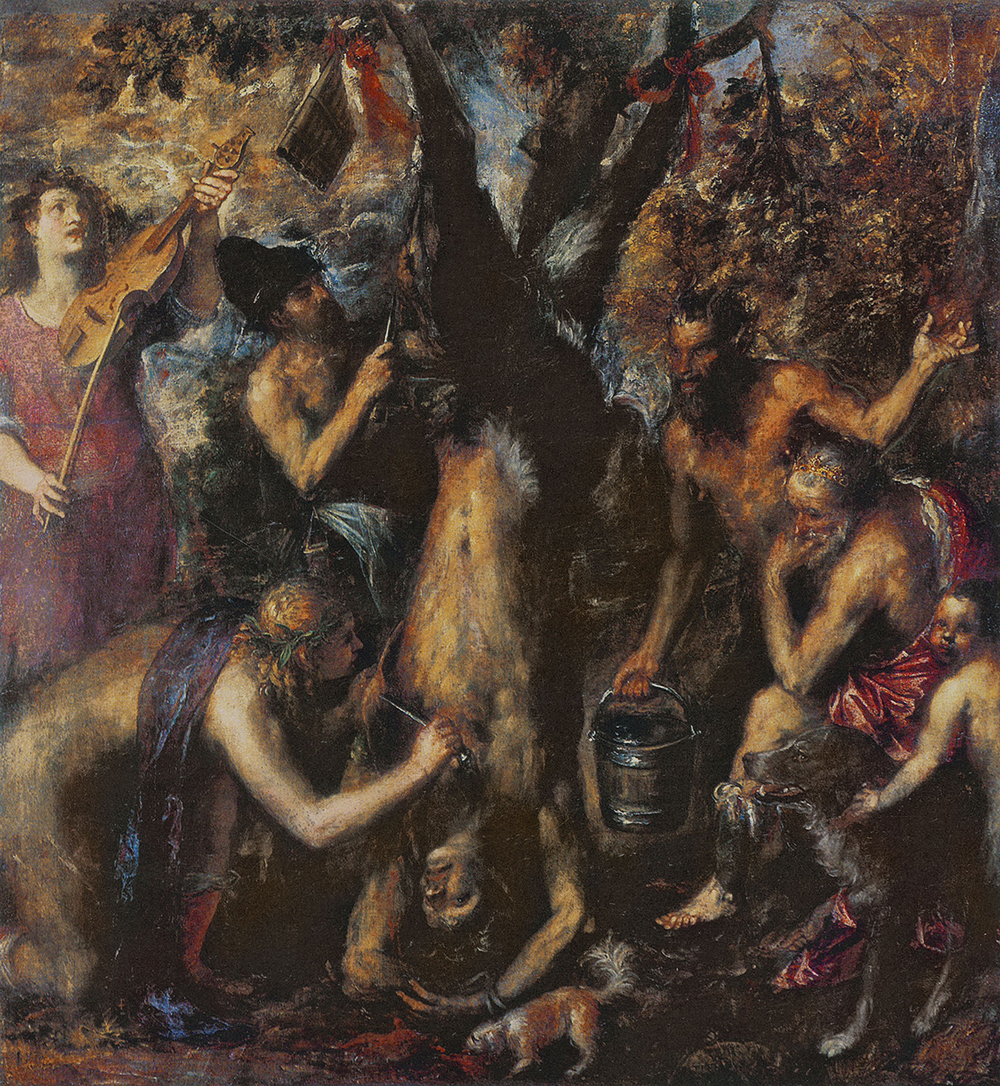
A master of the nude female body—his Venuses and Dianas are among the most compelling images of living skin that painting gave us—Titian also painted perhaps the most disturbing Renaissance version of a flaying in the later years of his life. Some art historians, such as Sydney Freedberg, speculate that The Flaying of Marsyas could have been inspired by a recent event that had shocked the Republic of Venice to its core. After the fall of Nicosia in the summer of 1570, Famagusta remained the last bastion of the Venetian Republic in Cyprus, as well as the easternmost stronghold of Christianity in the Mediterranean. The governor was Marcantonio Bragadin, a Venetian lawyer with considerable military experience. Famagusta was a remarkably well-protected fortress city. Behind its walls, which were fifty feet high and fifteen feet thick, eight thousand Venetians resisted for eleven months against ten times as many Turks. On August 5, 1571, after suffering numerous casualties, the Turks, exhausted and embarrassed but still in much better shape than their adversaries, decided to present the Venetians with generous enough terms to lead to surrender. On the day arranged to close the deal, Bragadin, perhaps feeling victorious and acting imprudently and arrogantly, presented himself before Lala Mustafa Pasha dressed in royal purple garments. Halfway through the negotiation, Mustafa—his pride offended or else eager to show strength in front of his demoralized army—added a new condition to the treaty: a Venetian commander would stay as collateral while the remaining inhabitants of Famagusta were transported to Crete. Bragadin refused. On the spot his three closest advisers were hacked to pieces by the pasha’s men. The fate that awaited Bragadin himself was infinitely worse.
They cut off his nose and ears, stuck him in a cage, and let him lie in the sun until his wounds festered. After a fortnight he was forced to carry bags filled with earth and rocks while dragged in a procession around the city. As he reached the square beside the Church of Saint Nicholas (which had already been turned into a mosque), he was asked to convert to Islam. According to eyewitness accounts, Bragadin replied, “I am a Christian, and thus I will live and die. I hope my soul will be saved. My body is yours. Torture it as you will.” The commander was then tied to a column and flayed alive. A contemporary, historian Oberto Foglietta, describes the horror:
Slowly they detached from his living body the skin, undressing it in a sole piece, to begin from the nape and the back and then the face, the arms, the thorax, and all the rest. Yet his constancy was never shaken, nor did ever a word pass his lips unworthy of the courage which endured these inhuman torments, but thanking God that he had saved him for such a fate, and reproaching Mustafa with his treachery, he gave up his ghost.
He died half an hour into the ordeal, as the butcher was getting to the waist. The pasha’s men then stuffed the skin with hay, sewed it back together, dressed it in Bragadin’s purple robe, and pinned the commander’s insignia on it. The grotesque puppet was paraded through the streets of Famagusta on a cow shaded by a red parasol. The skin was subsequently hung on the bowsprit of Mustafa’s ship and shown off in every port en route to Constantinople, where it was presented to the sultan. Almost a decade later, in 1580, Girolamo Polidoro, one of the survivors of the siege who was doing business in the city, purloined it from the arsenal and took it back to Venice, where it was buried in the church of San Gregorio. In 1596 it was transferred to the basilica of Santi Giovanni e Paolo, its final resting place. In an essay on Bragadin included in Flaying in the Pre-Modern World (2017), historian Kelly Devries relates that when the casket was opened in 1596, inside were a folded sheet of skin with chest hair and a hand with nails “that still seemed alive.”
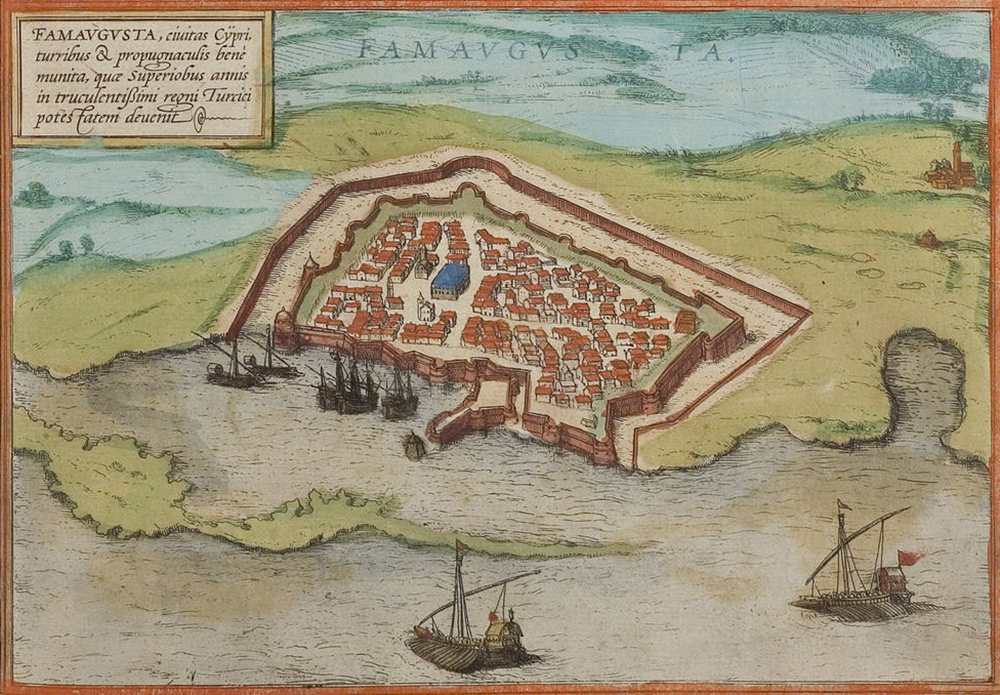
The death of Marcantonio Bragadin, still remembered as one of the most traumatic events in the history of Venice, inflamed many of the men who went on to defeat the Turkish armada at Lepanto less than two months later, instilling in them a sacred sense of duty and revenge. One Venetian in particular who might have been especially shocked by Bragadin’s martyrdom is Titian. His Marsyas was painted no sooner than 1571 and no later than 1576, in the aftermath of Famagusta and Lepanto. Titian’s Apollo, unmoved by the pain of his victim and fully concentrated on the task, cuts as if he were conducting a dissection. Punished for his arrogance, Marsyas, like Bragadin, is vivisected, an ordeal that none of the criminals whose bodies were dissected by Vesalius ever had to endure.
With the exception of some scattered incidents during the Soviet military intervention in Afghanistan in the 1980s, and more recently in the Mexican cartel wars, people being flayed alive is hardly something we hear about often. To us, it is the kind of horror that belongs only in B movies (or The Silence of the Lambs) and over-the-top crime novels. But that also was true of the sixteenth and seventeenth centuries, when such a punishment was by no means a common occurrence. Hence Thomas Browne’s fascination and hence Titian’s horrified inspiration—it was rare. Then as now, we find flaying an almost inconceivable expression of brutality, but one that can also stir curiosity and stimulate the imagination. Consider Body Worlds, the itinerant (and highly controversial) exhibition of dissected and flayed human bodies, preserved through a process known as plastination—it continues to tour the world and attract throngs of visitors curious to see what hides beneath the skin.